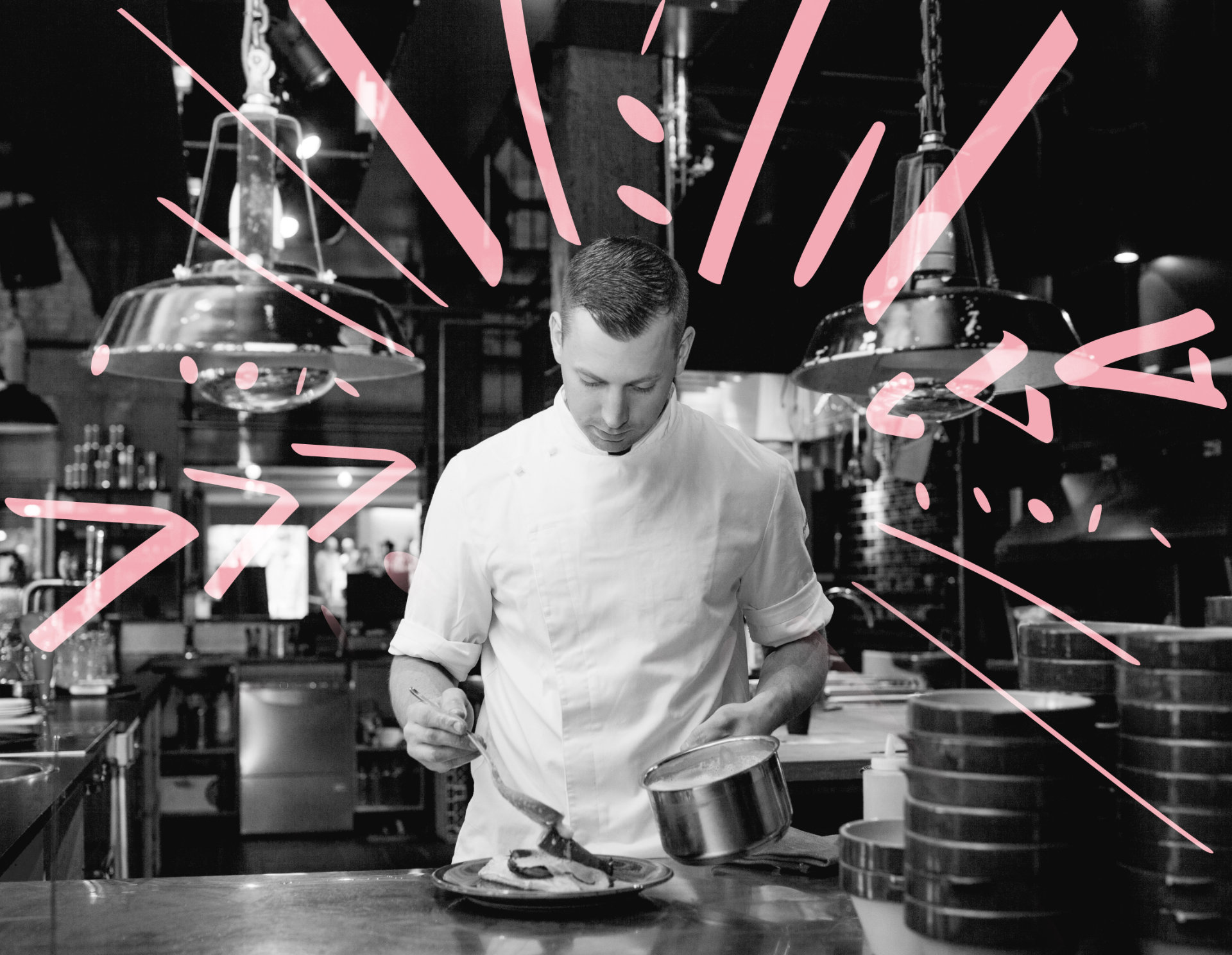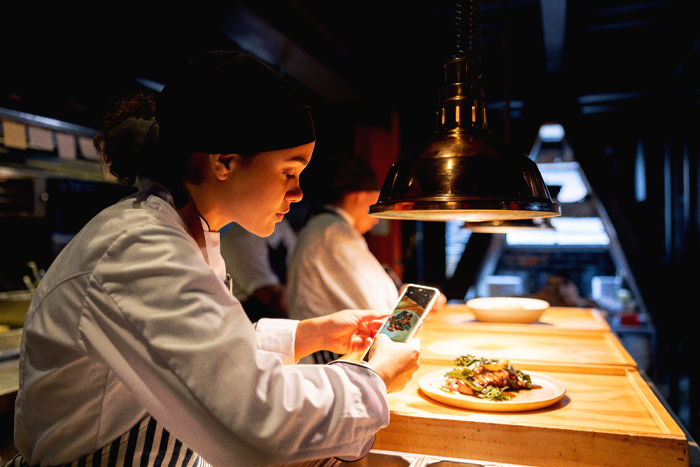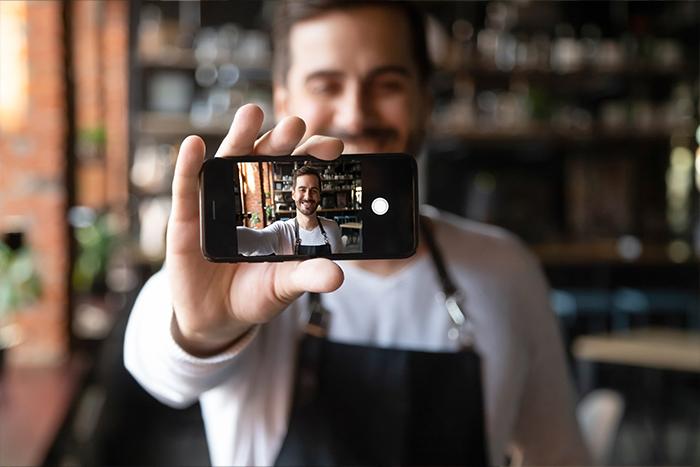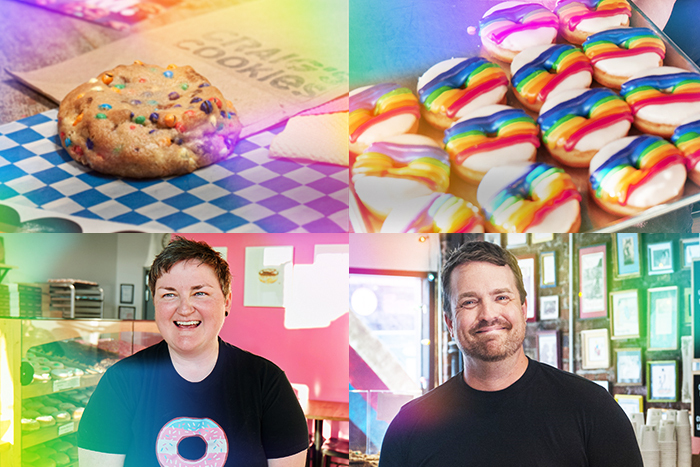The RC Show kicked off with a bang, leading with an incredibly informative panel discussion everyone was hungry to attend (Check the highlights of this food service event here). Moderated by our very own Kavita Joshi (Director of Digital) and Laura Amantea (Director of Brand), we heard from Peter Hand (Brand Strategy Lead for Google in North America), Christina Kavalauskas (Strategy Director for Creative Lab at TikTok), and Mukul Goyal (Client Partner with Meta), as they spoke about the different platforms and what those can do to help grow your business. What is each platform about? Which one’s best for your restaurant? How often should you post? Do you need to spend a lot of marketing money? We got all of your questions answered and then some. Read on for the highlights.
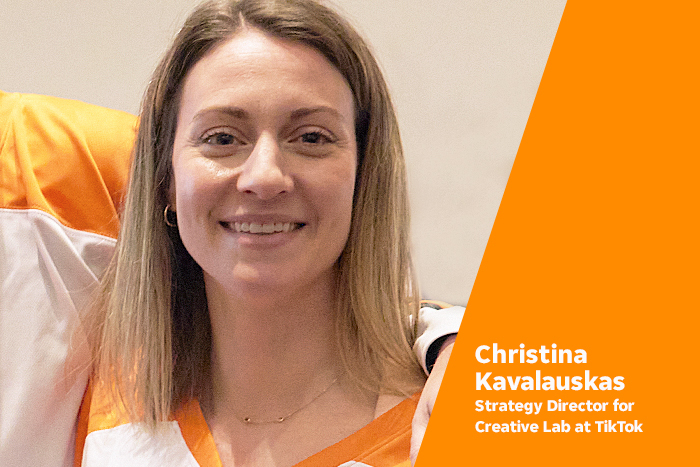
TikTok.
Though many consider it another social media platform, TikTok is an entertainment platform that lets users create, watch, and share 15-second to 10-minute videos shot on mobile. Three key elements of the business are: community (creators), discovery (suited to your interests), and culture (trends). “Brands are encouraged to play within the space as long as they do so in a way that’s authentic to the communities they represent,” says Christina Kavalauskas.
Some interesting stats:
- TikTok’s audience spends a movie’s worth of time on the app daily.
- 71% of TikTok’s audience feels a closer connection to people on TikTok vs other platforms through shared interests.
- 70% of TikTok’s audience believes they can change culture.
- 73% of TikTok’s audience feel a deeper connection to brands on TikTok than others because they show up in a unique and authentic way.
What does this mean for the restaurant industry? Users often refer to food-related content as Foodtok — and they have 3.1 billion views as a destination community within the TikTok platform. This has opened the door to all kinds of brands doing all kinds of different things, like these popular restaurants.
- McDonald’s: Leveraged existing brand assets to drive awareness of their iconic food items, like cinnamon rolls and fries.
- KFC: Worked with unique creators to drive demand for their new chicken sandwich, playing with the idea that “anyone can be the Colonel”.
- Cheesecake Factory: Leaned into a trend they saw on the platform, and turned an unofficial menu hack into an official menu item, the Louisiana Chicken Caesar Salad.
Three pieces of advice to market your restaurant:
- Get on TikTok.
- Get cooking: Experimentation is key to this platform. There’s no magic recipe for what’s going to land. You have to experiment, because something that works for you may not work for someone else.
- Partner with a sous chef: Creators are an asset here. They want to partner with brands and they’re really good at what they do. If you see a creator that’s already talking about your brand, reach out to them. Chances are they’ll want to partner.

YouTube.
With all of the shifts that have happened over the past couple of years, it seems that advertisers are returning to YouTube more than ever. As the pioneer of free video sharing (and watching), YouTube is where popular meets the person for an incredibly individualized experience and flexible formats (from 6 sec to 6 min to 6 hours). “No matter what your unique passions and interests are, you’ll be able to find that community and that content on YouTube, whenever you want.” says Peter Hand.
Some interesting stats:
- YouTube is the #1 video content provider.
- 63% of viewers say they bought from a brand as a result of what they saw on YouTube.
- More than a quarter of the time spent on YouTube is adults 18 and over watching content together (communal aspect).
- YouTube shorts are making it easier than ever to create and enjoy short-form content — up to 30B daily views.
Three YouTube trends from the past year:
- An explosion of streaming services (consumers watching what they want when they want).
- The continued rise of short-form content.
- There was a digital celebration in which people chose to execute all sorts of different videos online, from DIYs to recipe creations to music lessons.
A piece of advice to market your restaurant:
At the end of the day, it’s easy for things to get complex. “If you bring YouTube your challenges and your focused business goal, whether it’s drive growth or build your brand, the platform can help make it as simple as possible to hit your mark. Even use your existing assets to plug and play into whatever your objective needs to be.” says Peter.

Meta.
This is a company that builds technologies that help people connect, find communities of like-minded people, and grow business. Though the parent name Meta is fairly new, you will likely recognize their top platforms: Facebook, Instagram, Messenger, and WhatsApp.
Some interesting stats:
- Meta has 2.91 billion monthly active users around the world.
- 77% of internet users are active on at least one Meta platform.
- 60% of Instagram users go on the platform to find new products or places.
- People spend an average of 33 minutes a day on Facebook.
A piece of advice to market your restaurant:
“As we’re adapting to new behaviours and changes, there are a lot of things these platforms can help with, like communication moments and influences,” says Mukul Goyal. But as a restaurant, how can you drive sales using these platforms? With Meta, there are three ways:
- Direct food delivery ads: This is the simplest way. You don’t have to worry about logistics regarding payment. Your ad simply shows up on Instagram or Facebook, a consumer clicks on it, and they can order food through the service.
- Messenger storefront: This one is a more sophisticated option that uses a chatbot through messenger and WhatsApp. It’s a super useful tool for businesses that want to communicate with their customers in real-time. For example, customers can use the chatbot to ask their favourite restaurant a question about a menu item before they order it.
- Already have an app/website/landing page? If you have a store you want to drive traffic to, there are plenty of flexible solutions on each platform that can provide the tools you need to help drive traffic to your website or in-restaurant.
Topline takeaways from the talk.
If there’s one thing we learned here, it was that there is definitely no shortage of opportunities to be had on digital channels. Here are the net takeaways from the discussion.
- Bring the authentic brand of your restaurant to the platform.
- Creative content that really resonates with your local community is super important.
- Everyone is spending tons of time on these platforms, so you need to be where your customers are.
- There are a ton of organic opportunities that everyone can be a part of (and you don’t need to spend a load of marketing dollars).
- Experiment on all platforms to see what works best for you — it’s constantly changing.
The final burning question.
If money and time were finite, which platform should you focus on?
It should come as no surprise that the answer is different for different brands. Understanding your demographic is important to determine which platform to partner with. All platforms are going to do different things to reach consumers in different ways. The important thing is to think about how your messaging is going to land. Follow your consumer.
We hope you got some great tips on how to use these platforms to your advantage. At Skip, we’re always looking for ways to help our Partners grow, including marketing support. Want to learn more about how Skip can help with your digital marketing efforts? Contact us anytime, we’d be happy to give you more info

